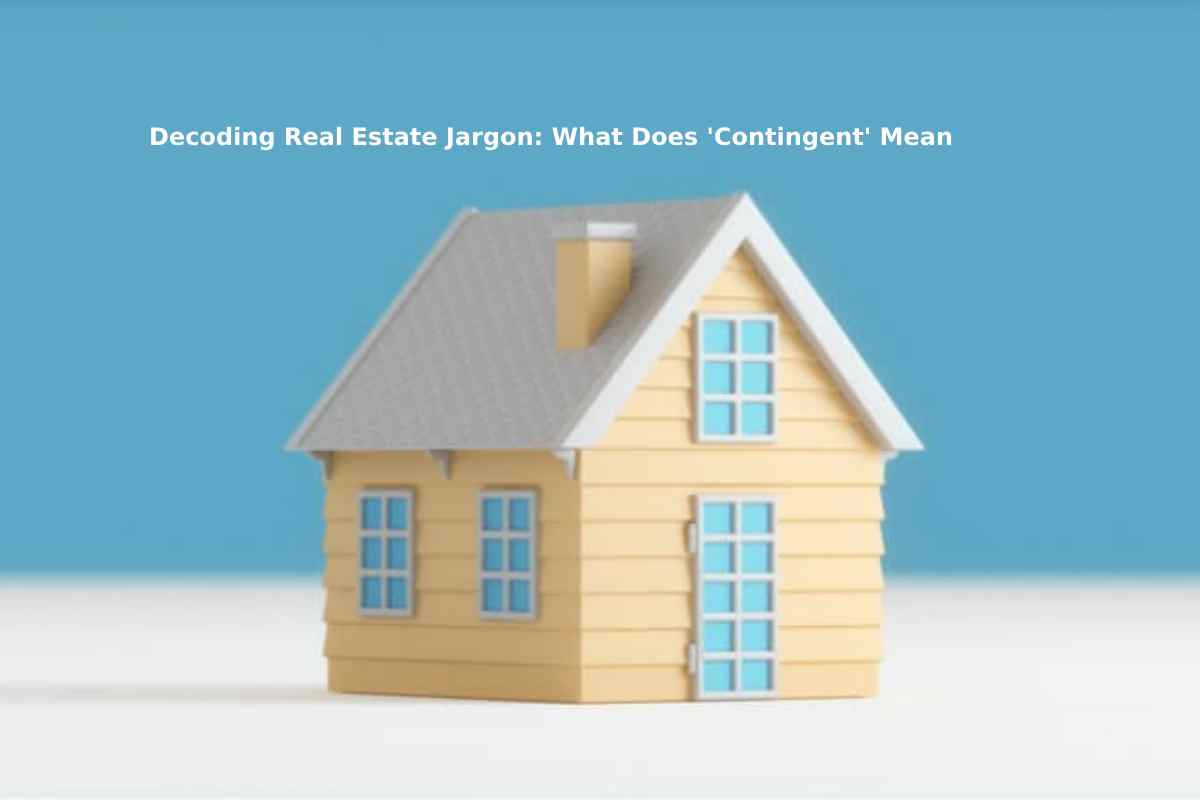
Buying or selling a home for the first time can feel like trying to speak a new language. You might scroll through listings and stumble across the word “contingent”—and suddenly, you’re not sure what you’re looking at. Is the house still available? Should you make an offer? What does it even mean?
Don’t worry. You’re not alone. This guide will break down everything you need to know about the term “contingent” in real estate listings. By the end, you’ll understand what it means, how it affects deals, and how to navigate a contingent situation like a pro.
What Does ‘Contingent’ Actually Mean?
In simple terms, a contingent status means that a seller has accepted an offer on the home, but the final sale is dependent on certain conditions being met. These conditions, known as contingencies, act like checkpoints. If they aren’t satisfied, the buyer can back out without losing their deposit.
According to Realtor.com, common contingencies include:
- Financing: The buyer must secure a mortgage.
- Inspection: A professional must inspect the property.
- Appraisal: The home must be valued at or above the purchase price.
Each contingency is there to protect the buyer from potential issues that could make the purchase financially or legally risky.
Types of Contingent Statuses
Real estate listings often label properties with specific types of contingent statuses. Here’s what each one means:
Active Contingent
This means the seller has accepted an offer, but the sale isn’t final. The home is still considered “active” on the market because contingencies haven’t been met yet. As Realtor.com explains, other buyers can still submit backup offers.
Contingent: Show
This indicates the seller is still showing the home, accepting backup offers in case the first deal falls through.
Contingent: No Show
Here, the seller isn’t accepting any more offers. They’re waiting to see if the initial deal closes.
Contingent: With Kick-Out
In this scenario, the seller can “kick out” the current buyer if a better offer comes in and the initial buyer can’t meet conditions within a certain timeframe.
Common Real Estate Contingencies Explained
Let’s take a closer look at the most common types of contingencies:
1. Financing Contingency
The buyer must secure a loan to purchase the home. If they can’t get financing, they can legally walk away. This protects buyers from being forced into a purchase they can’t afford.
2. Home Inspection Contingency
A licensed inspector evaluates the property. If the home has major issues—like mold, structural damage, or electrical problems—the buyer can request repairs, negotiate a lower price, or walk away.
3. Appraisal Contingency
This ensures the home is worth what the buyer has agreed to pay. If the appraisal comes in low, the buyer can renegotiate or cancel the deal without penalty.
4. Home Sale Contingency
This is a bit more complex. The buyer makes an offer contingent on selling their current home first. If they can’t sell it, they can back out of the purchase.
According to Investopedia, these clauses protect buyers from ending up with two mortgages.
Should You Waive Contingencies?
In a competitive market, some buyers try to sweeten their offer by waiving certain contingencies. That’s risky.
As Realtor.com warns, waiving financing, appraisal, or inspection contingencies could lead to serious problems, including financial loss or discovering deal-breaking issues after moving in.
However, in a seller’s market with low inventory, some buyers feel pressure to take the gamble.
How the Market Impacts Contingent Deals
The broader housing market directly affects how contingencies play out. In a hot market, homes sell fast, and buyers may waive contingencies to stay competitive. Sellers, on the other hand, can afford to be picky.
In a cooler market or when home values dip, contingencies become more common and negotiations are more balanced. According to the Real Estate Institute, there’s been a 1.4% yearly drop in home values. That gives buyers more leverage to keep contingencies in place.
What Buyers and Sellers Should Know
Navigating contingent offers can be tricky, especially if you’re new to real estate. Here are a few things to keep in mind:
If You’re a Buyer:
- Understand each contingency before signing anything.
- Don’t waive protections just to win a bidding war.
- Work with a knowledgeable real estate agent who can guide you.
If You’re a Seller:
- Evaluate the strength of the buyer’s contingencies.
- Consider backup offers if your sale is contingent.
- Communicate clearly with your agent about acceptable risks.
Practical Advice for Navigating Contingent Sales
Want to improve your chances of success during a contingent sale?
Here are some smart steps:
- Get pre-approved for a mortgage before house-hunting. This strengthens your financing contingency.
- Hire a trustworthy real estate agent who understands the market and contingency clauses.
- Move quickly on inspections and appraisals to avoid delays.
- Submit a backup offer if you’re eyeing a contingent listing—you might still get the house.
Understanding the meaning of contingent status can help you make smarter decisions and avoid costly mistakes.
Final Thoughts: Know Before You Go
The word “contingent” might seem intimidating, but it’s really just a way to keep both parties safe in a real estate deal. Whether you’re buying your first home or selling one you’ve outgrown, understanding the role of contingencies can mean the difference between a smooth transaction and a stressful one.
In summary:
- A “contingent” listing means the sale is pending certain conditions.
- Common contingencies include financing, inspection, and appraisal.
- The type of market you’re in affects how contingencies are handled.
- Both buyers and sellers should be cautious, informed, and supported by a solid real estate agent.
Now that you know what it means, you’re one step closer to closing the deal with confidence.